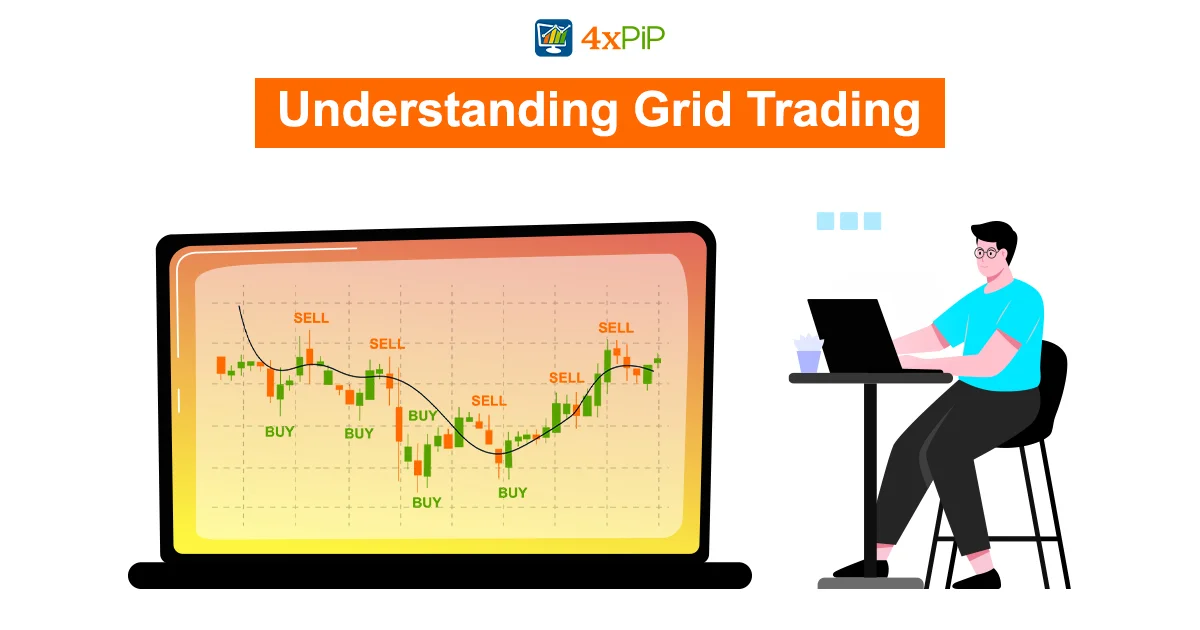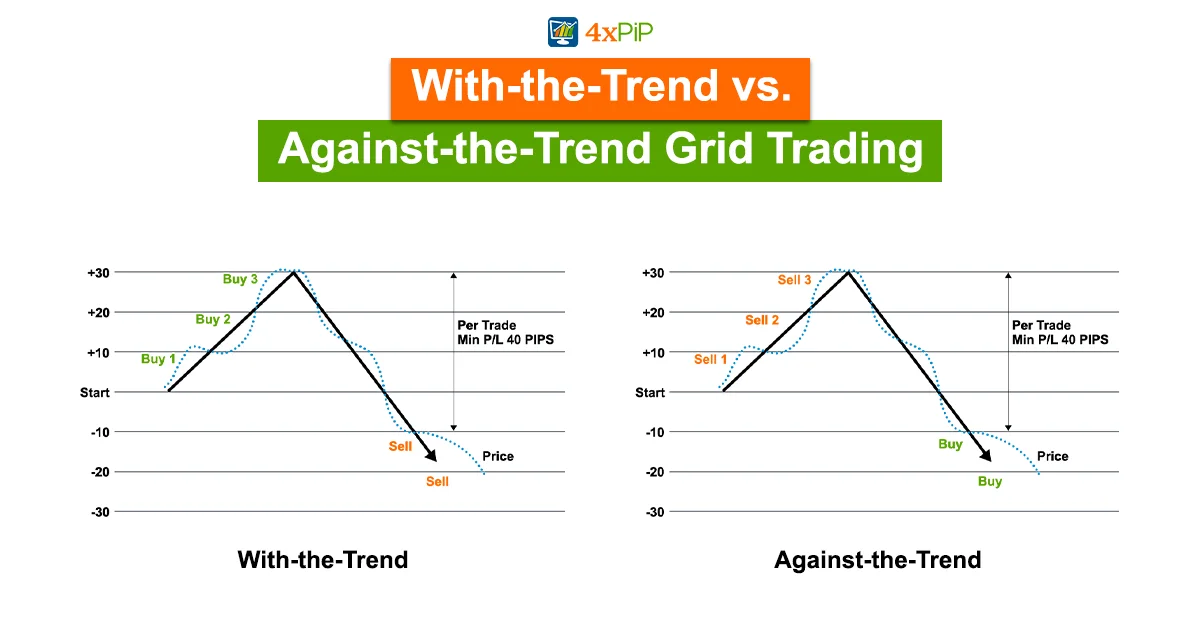In this comprehensive guide, 4xPip brings you valuable insights into the world of grid trading, an effective strategy widely employed in the foreign exchange market. Grid trading involves strategically placing buy and sell orders at set intervals around a base price to capitalize on market unpredictability. If you’re impatient to enhance your trading skills, 4xPip is here to provide expert guidance and introduce you to the complexity of grid trading. For further assistance, reach out to our experts at [email protected].
Understanding Grid Trading

Grid trading streamlines market participation by strategically placing orders above and below a predefined price, allowing traders to capitalize on both trends and ranging market conditions. This technique boasts a significant advantage in its automation potential, reducing the requirement for complete market forecasting. By Utilizing automation, traders can improve efficiency and reduce the time commitment required for continuous market analysis.
However, despite its merits, grid trading is not without its challenges If traders do not strictly adhere to stop-loss limits, the biggest worry is the possibility of suffering significant losses. The complex nature of running and/or closing multiple positions within a large grid necessitates a disciplined approach. To mitigate these risks, 4xPip strongly recommends imposing a limit on the number of orders within the grid, typically suggested at five. This strategic limitation ensures effective management of potential losses, providing traders with a safeguard against unfavorable market movements.
While grid trading presents an automated and efficient approach to market engagement, the careful management of associated risks is paramount. 4xPip’s advice on limiting the number of orders within the grid serves as a careful strategy for traders aiming to strike a balance between automation and risk control.
With-the-Trend vs. Against-the-Trend Grid Trading

Grid trading strategies offer flexibility, allowing traders to align with or against the dominating market trend. In the context of with-the-trend grid trading, traders strategically amplify their position sizes as the price displays a sustained directional movement. This approach seeks to maximize profits as the price moves favorably. However, a critical challenge appears – deciding when to exit the grid to secure accumulated profits. The art lies in measuring the optimal moment, ensuring gains are realized before potential reversals decline profits. This decision-making at this point is crucial for traders employing with-the-trend grid strategies.
On the contrary, against-the-trend grid trading proves more effective in markets characterized by oscillations or ranging conditions. In this scenario, traders position buy orders at regular intervals below the predetermined price and sell orders above it. This approach capitalizes on the price’s trend to fluctuate within a defined range. Despite its effectiveness, the strategy introduces an inherent risk – the lack of controlled risk. To address this concern, 4xPip strongly supporters for the implementation of stop-loss levels. These predetermined limits act as a safeguard, preventing the accumulation of significant losses and ensuring disciplined risk management in against-the-trend grid strategies.
Grid Trading Construction
Constructing a grid involves several crucial steps, each demanding careful consideration. First and foremost, traders need to choose a suitable interval, such as 10 pips, 50 pips, or 100 pips, depending on their trading strategy. This interval sets the spacing for buy and sell orders within the grid, influencing the overall effectiveness of the trading approach.
Once the interval is determined, the trader must pinpoint the starting price for the grid. This starting point serves as the reference for placing subsequent orders. The choice of the starting price is pivotal, as it influences the grid’s sensitivity to market movements. A strategic decision here can significantly impact the success of the grid trading strategy.
After deciding on the interval and starting price, traders face a crucial choice: whether to implement a with-the-trend or against-the-trend grid. Each approach has its merits and drawbacks, requiring a careful evaluation of market conditions and the trader’s risk tolerance. A with-the-trend grid involves placing buy orders at intervals above the set price and sell orders below, capitalizing on sustained directional movements.
For example, envision a trader selecting a with-the-trend grid with a starting point of 1.1550 and a 10-pip interval. In this scenario, traders strategically place buy orders at 1.1560, 1.1570, 1.1580, 1.1590, and 1.1600, while positioning sell orders at 1.1540, 1.1530, 1.1520, 1.1510, and 1.1500. To navigate this landscape successfully, 4xPip recommends adopting a disciplined approach to exit the trade at the right moment, ensuring traders lock in profits effectively.
Example of Grid Trading in the EURUSD
To illustrate grid trading, consider a day trader observing the EURUSD ranging between 1.1400 and 1.1500, with the current price near 1.1450. Employing a 10-pip interval against-the-trend grid, the trader strategically places sell orders at 1.1460, 1.1470, 1.1480, 1.1490, 1.1500, and 1.1510, with a stop loss at 1.1530. Correspondingly, buy orders are placed at 1.1440, 1.1430, 1.1420, 1.1410, 1.1400, and 1.1390, with a stop loss at 1.1370. 4xPip highlights the importance of risk management in grid trading, as illustrated in this practical example.
Conclusion
In conclusion, grid trading is a versatile strategy that can be adapted to different market conditions. However, success hinges on disciplined execution, risk management, and an understanding of market trends. 4xPip encourages traders to delve deeper into grid trading strategies and explore the automation tools and expert guidance available on our platform. For further information and assistance, contact 4xPip’s experts at [email protected].












